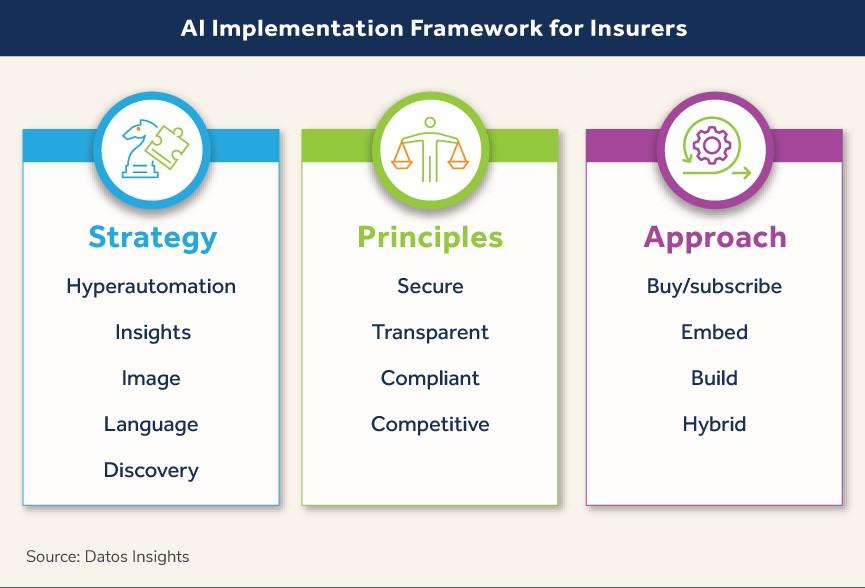Insurance is an essential aspect of financial security, providing individuals and businesses with peace of mind in the face of unexpected events. However, the world of insurance is not a one-size-fits-all model; it varies significantly from country to country. From health coverage and property insurance to liability and travel policies, the landscape can be as diverse as the cultures and economies that shape it. In this article, we’ll take a closer look at how insurance coverage differs across the globe. We’ll explore the key factors that influence these variations, the types of policies most commonly sought in different regions, and the implications for consumers and businesses navigating this complex terrain. Join us as we embark on this insightful journey into the world of global insurance, uncovering what you need to know to stay protected no matter where you are.
Table of Contents
- Understanding Insurance Frameworks Around the World
- Comparative Analysis of Coverage Types and Benefits
- Navigating Regulatory Differences in Global Insurance Markets
- Tips for Choosing the Right Insurance Across Borders
- The Way Forward
Understanding Insurance Frameworks Around the World

Insurance frameworks vary significantly across nations, influenced by cultural, economic, and regulatory factors. In some countries, like the United States, the insurance system is primarily private, offering a wide range of options driven by competition. Conversely, nations such as Canada have a mix of public and private insurance schemes, particularly in healthcare where provincial governments oversee coverage. Understanding these distinctions fosters a deeper appreciation of each country’s approach to risk management and financial protection. Here are some key elements that shape these frameworks:
- Regulatory Environment: Different countries have varying degrees of regulation, impacting how insurers operate and consumers are protected.
- Types of Coverage: Some countries emphasize health insurance, while others may prioritize auto or property coverage.
- Market Structure: The presence of monopolies or a competitive marketplace influences price and choice.
Moreover, the cultural context surrounding insurance can affect its perception and utilization. In countries like Japan, where there is a strong emphasis on community and familial responsibility, many people may rely on informal support methods instead of formal insurance products. In stark contrast, European countries often view insurance as an essential component of social security. This can lead to varied levels of awareness and engagement with insurance products, as depicted in the table below which summarizes key insights from several countries:
| Country | Insurance Type | Market Structure |
|---|---|---|
| United States | Private Health, Auto | Highly Competitive |
| Germany | Public Health, Property | Mixed |
| Japan | Health, Life | Moderately Competitive |
| Australia | Health, Home | Competitive |
Comparative Analysis of Coverage Types and Benefits

When examining insurance coverage globally, significant variations become apparent across different nations. The fundamental differences often lie in the types of coverage available and the benefits that come with them. For instance, in Europe, many countries offer universal health coverage, providing citizens with access to essential medical services at little to no out-of-pocket cost. In contrast, the United States predominantly operates on a private insurance model, where individuals may need to navigate complex plans to receive adequate healthcare. This disparity leads to differing levels of accessibility and financial burden experienced by citizens, making it essential to understand the implications of these variances.
Additionally, the scope of insurance products extends beyond health coverage. In many Asian countries, such as Japan and Singapore, there is a robust offering of life and property insurance, often bundled with health policies to create comprehensive packages. Conversely, in developing regions, policies tend to focus on more basic coverage types, such as microinsurance, designed to meet the needs of low-income populations. To illustrate these differences further, consider the following comparison:
| Country | Primary Coverage Type | Key Benefits |
|---|---|---|
| Germany | Universal Health Insurance | Low out-of-pocket expenses, broad access to specialists |
| USA | Private Health Insurance | Customizable plans, extensive networks |
| Japan | National Health Insurance | Coverage for all citizens, high quality of care |
| India | Microinsurance | Affordability for low-income families, simple claims processes |
Navigating Regulatory Differences in Global Insurance Markets
In the context of global insurance markets, regulatory frameworks are profoundly diverse, influencing how coverage is structured and offered. Each country has its own set of rules, authorities, and practices governing insurance, leading to significant variations in what is available to consumers and businesses. Understanding these differences is crucial for multinational companies and expatriates seeking the right coverage. Some of the key factors that contribute to this complexity include:
- Licensing Requirements: Different countries often require insurers to satisfy various licensing conditions before they can operate, impacting the availability of certain products.
- Solvency Regulations: Stricter solvency regulations in some regions may lead to enhanced financial stability for local insurers.
- Consumer Protections: Varying regulations can provide different levels of consumer protection, influencing how claims and disputes are managed.
- Premium Taxes: Countries have different tax structures that can affect the cost of insurance premiums.
Additionally, cross-border insurance can introduce layers of complexity, particularly where treaties and international agreements come into play. For instance, some countries participate in regional agreements that allow insurers to offer coverage across borders with less bureaucratic red tape. To illustrate the impact of these variations, consider the following table which highlights the key regulatory aspects affecting insurance in a few selected countries:
| Country | Licensing Authority | Primary Regulation | Premium Tax Rate |
|---|---|---|---|
| United States | State Departments of Insurance | State-based regulations | Varies by state (avg. 2–4%) |
| Germany | BaFin (Federal Financial Supervisory Authority) | Insurance Supervision Act | 19% VAT on premiums |
| Japan | Financial Services Agency | Insurance Business Act | 5% Consumption Tax |
| Australia | Australian Prudential Regulation Authority | Insurance Act 1973 | 9% GST on premiums |
Tips for Choosing the Right Insurance Across Borders
When navigating the complexities of international insurance, it’s crucial to consider several key factors that will help you select the most appropriate coverage. Start by researching local regulations and requirements in each country where you reside or plan to travel. Insurance laws can vary significantly, influencing the type and extent of coverage you are legally obliged to maintain. Additionally, engage with insurance providers who have experience in international markets; they can offer insights tailored to your specific needs.
Another important aspect is to assess the medical and emergency services available in the destination country. Coverage might include elements like evacuation and repatriation, especially in cases of major health crises. Keep the following considerations in mind when reviewing options:
- Coverage Limits – Ensure the policy covers enough for potential medical emergencies.
- Exclusions – Be aware of situations not covered, such as pre-existing conditions.
- Claim Process – Familiarize yourself with how to file a claim and the associated timelines.
To aid your decision-making, you can refer to a comparison table summarizing typical insurance offerings across different countries:
| Country | Typical Coverage | Minimum Required |
|---|---|---|
| USA | Comprehensive Health | $750,000 |
| Germany | Public Health & Private Options | None (public sector) |
| Australia | Medicare & Private Health | None for residents |
The Way Forward
exploring the intricacies of global insurance has revealed a fascinating landscape shaped by cultural, economic, and regulatory factors unique to each country. As we’ve seen, coverage options can vary dramatically from one region to another, reflecting local needs and expectations. Whether you’re a seasoned traveler, an expatriate, or simply curious about how insurance works around the world, understanding these differences can help you make informed decisions about your own coverage.
As the world becomes increasingly interconnected, the importance of comprehensive and adaptable insurance solutions cannot be overstated. Whether you need health insurance while living abroad or coverage for your business operations in a foreign market, staying informed about your options is key. We hope this exploration has provided valuable insights into the diverse insurance landscape and inspired you to delve deeper into the specifics of your own coverage needs.
Thank you for joining us on this journey through global insurance. We encourage you to share your thoughts and experiences—how has insurance varied for you in different countries? Let’s continue the conversation in the comments below!



